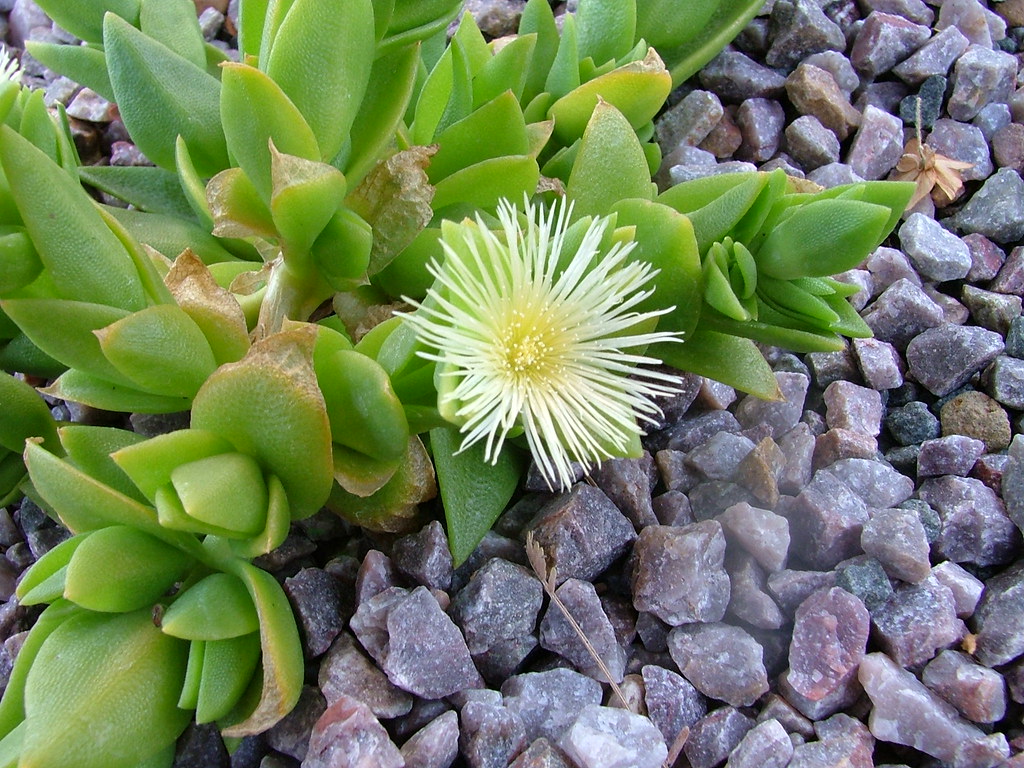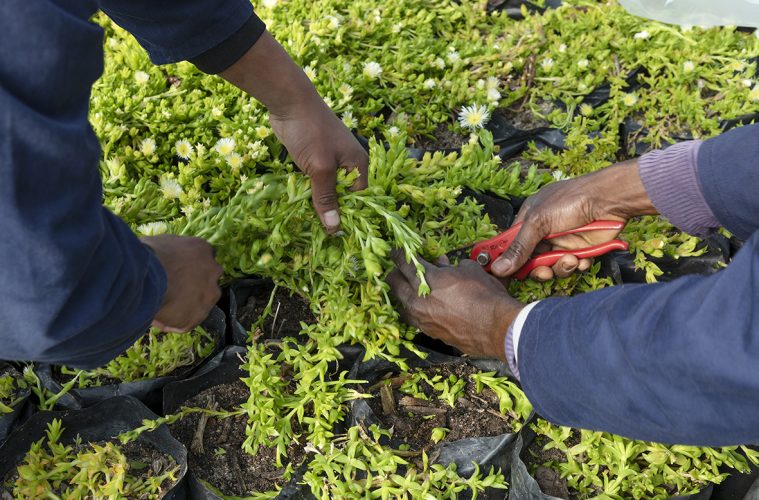The kougoed plant scientifically known as the Sceletium tortuosum, is a beautiful ground-covering succulent with attractive colourful flowers with thin petals. The flower petals are white to pale yellow, pale salmon, or pale pink. It is usually cultivated by gardeners as a front yard and yard ground cover to prevent cars parked close to their yards and homes. Landscapers admire the use of this plant due to its low maintenance qualities and ability to beautify spaces.
It is indigenous to Southern Africa, Namaqualand, commonly known as kanna of kannaland. This plant was historically medicinally used by the Khoisan people of South Africa before it became well-known amongst colonizers in the 17th century. The first known written account of its use was in 1662 by Jan van Riebeeck.
Benefits of growing Kuogoed plant
Kuogoed is a fast-growing, low-maintenance plant. This plant can survive and thrive with little to no maintenance. It makes a perfect ground cover for outdoor gardens and front yard gardens. This plant has the ability to overtake the growth of weeds and grasses. Under controlled conditions, Sceletium is best kept potted on a sunny windowsill in porous somewhat loamy soil.

Image: Pexels
Medicinal benefits of Kougoed
Sceletium has been used by South African pastoralists and hunter-gatherers as a mood-altering substance since prehistoric times. The leaves of this succulent are most commonly used in herbal remedies. Due to its mood-stabilizing properties, it has been used to reduce psychological and psychiatric disorders associated with anxiety such as major depressive episodes, alcohol and drug dependence, bulimia nervosa, and obsessive-compulsive disorders.
View this post on Instagram
The kougoed plant (Sceletium tortuosum) is not only a visually striking succulent but also a resilient and low-maintenance groundcover with a rich cultural and medicinal history. Its ability to suppress weeds makes it an excellent addition to gardens, while both its traditional and modern medicinal applications highlight its significance beyond aesthetics.
Whether grown for its beauty, ease of care, or therapeutic properties, this remarkable plant continues to hold value in both horticulture and herbal medicine.
ALSO SEE: HOW TO GROW MORINGA, THE MIRACLE TREE
Featured image: Pexels


